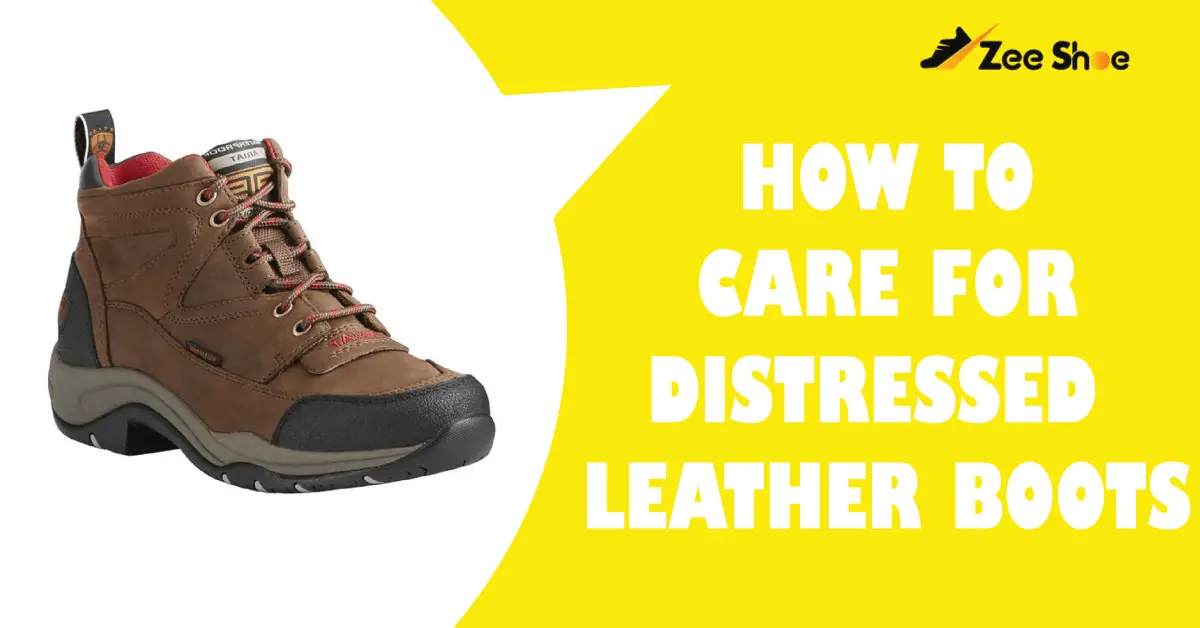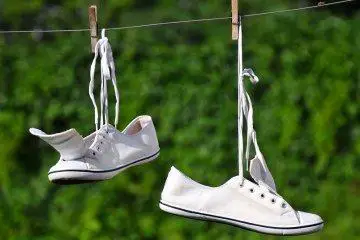If your leather boots are looking a little worse for wear, don’t despair! You can restore them to their former glory with care and attention. Here are some tips on how to care for distressed leather boots:
- Remove any dirt or debris from the surface of the boots with a soft cloth.
- Apply a leather conditioner to the boots using a soft cloth. Work the conditioner into the leather in a circular motion.
- Allow the conditioner to soak into the leather for at least 15 minutes.
- Buff the boots with a soft cloth to remove any excess conditioner.
- Apply a leather protector to the boots to help repel water and stains.
- Store your boots in a cool, dry place when they’re not being worn.
Following these tips can keep your distressed leather boots looking great for years.
Store your boots in a cool, dry place:
This is one of the most important tips for caring for distressed leather boots. If you store your shoes in a warm, humid environment, the leather will start to warp and crack. So, store your boots in a cool, dry place, such as a closet or shoe rack.
Use a shoe tree:
Shoe trees are essential for keeping your boots in good shape. They help absorb moisture and keep the shape of the boot while not being worn. So, if you want to prolong the life of your distressed leather boots, make sure to use shoe trees when you’re not wearing them.
Remove dirt and debris regularly:
Dirt and debris can damage the leather of your boots, so it’s important to remove them regularly. The best way to do this is to use a soft cloth or brush to gently remove any dirt or debris from the boot’s surface.
Apply leather conditioner:
Leather conditioner helps to keep the leather soft and pliable. It’s important to apply conditioner to your boots regularly, especially if you live in a dry climate. To apply the conditioner, use a soft cloth or brush to work it into the leather in a circular motion.
Allow the conditioner to soak in:
After you’ve applied the conditioner, it’s important to let it soak into the leather for at least 15 minutes. This will help to ensure that the conditioner is properly absorbed into the leather.
Buff the boots:
Once the conditioner has had a chance to soak in, you can buff the boots with a soft cloth to remove any excess conditioner.
Apply a leather protector:
A leather protector helps to repel water and stains, damaging your boots’ leather. Applying a leather protector regularly is important, especially if you live in a wet climate. To apply the protector, use a soft cloth or brush to work it into the leather in a circular motion.
Avoid getting the boots wet:
Water can damage the leather of your boots, so it’s important to avoid getting them wet if possible. If you must walk in wet conditions, protect your boots with a waterproofing spray.
Let the boots air out:
After you’ve worn your boots for a day, you must let them air. This will help to prevent the leather from getting too moist, which can cause it to warp and crack. Simply place your boots in a well-ventilated area near an open window, and allow them to air out overnight.
Use boot socks:
Boot socks help to absorb moisture and protect the leather from getting too wet. They also help to keep your feet warm in cold weather. So, if you want to prolong the life of your distressed leather boots, use boot socks when you’re wearing them.
Re-sole as needed:
The soles of your boots can wear down over time, so it’s important to have them resolved as needed. This will help extend your boots’ life and keep them looking their best.
Take care when cleaning:
When cleaning your boots, it’s essential to use a mild cleaner and a soft brush. Scrubbing too hard can damage the leather. So, be sure to use a gentle hand when cleaning your boots.
Be careful when using polish:
Polish can darken the leather of your boots, so it’s important to use it sparingly. If you use a polish, choose a colour that matches the leather of your boots.
Avoid over-exposure to sunlight:
Sunlight can damage the leather of your boots, so it’s important to avoid over-exposing them to sunlight. If you must be in the sun for extended periods, protect your boots with sunscreen or sunblock.
Know when to replace them:
No matter how well you take care of your boots, they will eventually need to be replaced. So, it’s important to know when to let go of your old pair and invest in a new one. Generally, you should replace your boots every few years or as needed.
Conclusion:
At the end of the articles, please summarize the main points and reiterate the importance of caring for one’s leather boots. Emphasize that proper maintenance can extend the life of the boots and keep them looking their best.
FAQs:
Here are a few frequently asked questions about how to care for distressed leather boots.
What is the best way to store my leather boots?
The best way to store your leather boots is in a cool, dry place. Avoid storing them in direct sunlight or near a heat source, as this can damage the leather.
How often should I apply conditioner to my leather boots?
It’s generally recommended to apply conditioner to your leather boots every few months. However, if you live in a dry climate, you may need to use it more often.
Can I use shoe polish on my leather boots?
Yes, you can use shoe polish on your leather boots. However, it’s important to use it sparingly, as it can darken the leather. Choose a polish colour that closely matches the leather of your boots.
How often should I have my leather boots resolved?
The soles of your boots can wear down over time, so it’s important to have them resolved as needed. This will help extend your boots’ life and keep them looking their best. Generally, you should replace the soles every few years or as required.
My leather boots are starting to show signs of wear and tear. Is it time to replace them?
No matter how well you take care of your boots, they will eventually need to be replaced. So, it’s important to know when to let go of your old pair and invest in a new one. Generally, it would help if you replaced your boots every few years or as needed.




